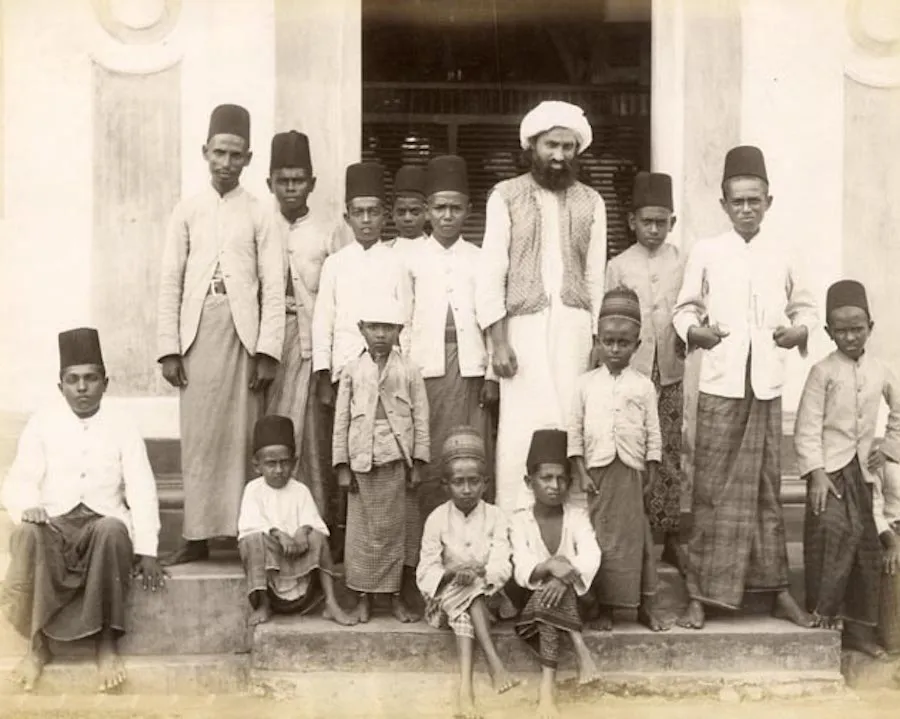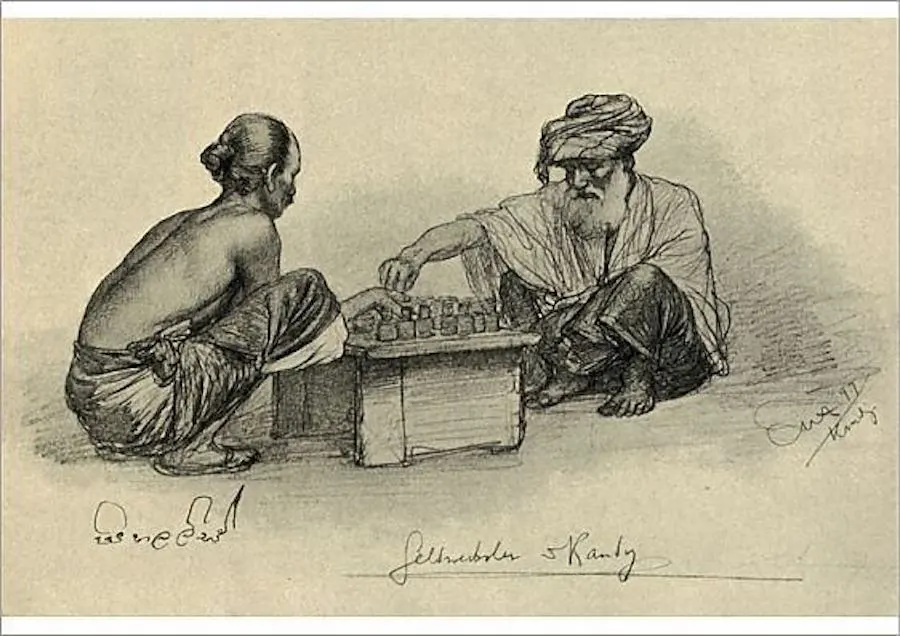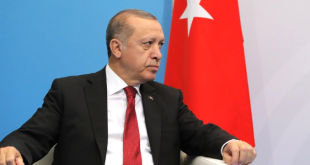Sri Lanka experienced major waves of immigration during the late 19th and early 20th centuries, when throngs of immigrants from India & other British colonies took up residence on the island. Indentured labourers from the erstwhile Madras Presidency & Malabar, who were recruited to work on the central Hill plantations of tea, rubber & coffee, constituted the greatest proportion of this group, followed by Coast Moors, who also came from South India. Presumably, the least known among the surfeit of ethnic groups that settled in Ceylon are the ‘Afghans’, who were originally brought to the Island by the British to work as horse-keepers and indentured labourers and by the turn of the 20th century, many had become full-time usurers and traders in Ceylon. These ‘Afghans’ who were mainly of Pashtun extraction, hailed from Afghanistan & from the North-Western frontiers & Baluchistan Agency of British India (present-day Pakistan) and were popularly identified as “Bhais” in Ceylon,. Their numerical strength according to the population census of 1881 was just over a thousand, extremely insignificant in proportion to the whole population of Ceylon at the time and by 1901, their population had plummeted to 270. The census of 1911 gave them 466 souls, census of 1921 recorded 304 members and by 1946 their number had risen to 551. After which, there has been no mention of ‘Afghans’, in any of Sri Lanka’s population censuses and demographic statistics. The money lending ordinance (1918), citizenship act & the infamous repatriation bill led to their disappearance from Ceylon, nonetheless, there are a handful of families that claim Pashtun ancestry in Sri Lanka.
Afgan Traders
The Afghans who took up residence in Ceylon, were referred to a by a multitude of terms, viz. Afghan karayo (Sinhala for Afghan man), Pattani, Pattaniyar (Pathan), Kabul Manishen (Tamil for man from Kabul), Bangali etc. but the most common term employed by the natives was, “Bhai”, which was not only affixed to their names but was also recorded by officials in Ceylon as their surname. As a matter of fact, my paternal great-grandfather was an Afghan (Pathan) named Carim Ghani (Khan) Baay, a coach driver who permanently settled in Ceylon, following his marriage to a Ceylonese lady from Slave Island. Although these Afghans belonged to numerous tribes (Afridi, Khilji, Yousufzai, AhmedZai, Kakar etc) and bore patronymics and titles like Khan etc, the British deliberately registered them as Bhais (Baay), which was clipped to their individual names mainly to distinguish them from other minorities of Ceylon like the Parsis, among whom the surname Khan was popular (the Khan clock tower in Pettah was built by a Parsi Merchant Framjee Bhikhajee Khan). Interestingly the Malays in Ceylon identified the Afghans as, “Bangali Orang”, meaning “man from Bengal”. That was because, the Pathans who were addicted to commercial pursuits, made frequent trading visits to Bengal, especially to Calcutta, the then capital of British India & some of them even had families there. Calcutta is still home to a significant population of Pathans, referred to locally as, “Kabuliwalas” (Kabul man). In fact, the fabled Bengali novella “Kabuliwala” (1892) penned by Indian Laureate Rabindranath Tagore revolves around a Pathan (Pashtun) merchant who is friends with a five-year-old girl Mini who hails from an aristocratic Bengali family in Calcutta. The terms “Pathan” and “Afghan” were used interchangeably by the British to describe the ethnic Pashtuns who lived in the Indian subcontinent. As a matter of fact, the word ‘Pathan’ is simply the Hindustani variant of the word ‘Pashtun’. However, irrespective of the terms used to describe the Pathans, only those who lived in major cities knew of their existence, mainly because their population was exceedingly small when compared with the other principal races back then. In fact, many presumed them to be part of the larger Moor community despite their (Pathans) peculiar physical characteristics & distinctive form of clothing.

An Afghan man with Ceylon Moors
Pathan Warriors
Legend has it that Pathan cloth traders from Kabul arrived somewhere in the late 15th century when their schooner sought shelter in Batticaloa harbour from a storm. At the time, there were many Tamil fisherfolk tribes living on the Eastern coast, competing for trade & scarce resources, in particular, the pearl & conch shellfisheries. The various tribes came into conflict with each other, but the most frequent skirmishes were between the Thimilars & Mukkuvars (also spelt “Mukkiyar”). Thimilars (named after “thimil” a Tamil word for “boat”, literally meaning boatmen) had their settlements in ‘Thimilar Theevu’ & on the Northeastern coast of Ceylon while ‘Eravur’ in Batticaloa was the stronghold of the Mukkuvar tribe. During the annual rice-harvesting season, Thimilars raided & pillaged Eravur & other Mukkuvar hamlets, razed their temples, destroyed their crops and their meager livestock, & raped & abducted Mukkuvar women. Ergo the “Mukkuvars” established an alliance with the Pathans, & sought their help to thwart the Thimilar’s incursions into Eravur. The tall & robust Pathan Traders, renowned for their martial prowess helped the Mukkuvars to stave off the attacking Thimilars. Several place names in Batticaloa appertain to these historic battles between the Thimilars and Mukkuvars-Pathans. These are “Vantharumoolai’ (Came-rested corner), ‘Sathurukondan’ (meaning “where the Enemy was killed” referring to the execution of the Thimilar chief), ‘Santhiveli’ (Meeting-moor) & “Vathiyai-thookia-palai” (Place where the Thimilar Queen/ Chieftess was hanged). Legend also has it that the Pathans helped the Mukkuvars of Akkaraipattu to fend off a group of Vedda bandits. These Pathans were rewarded through marriages with local women & were subsequently assimilated into the Mukkuvar tribe. Interestingly, in traditional Mukkuwar families, the descent is traced through the mother and her maternal ancestors, “taay vali/ pen vali’ (meaning mother’s/women’s way) ergo every member of a Mukkuvar ‘kudi’ (social organization) inherits the membership to the clan & subclan from his/her mother. Because the Mukkuvars stringently followed their customs & practices of matrilineality & matrilocality, the children sired by Pathan traders & their descendants became part of the “Mukkuvar tribe”, resultantly the Pathans lost their distinctiveness & cultural identity.
Under British Rule
In the late nineteenth century, the quest for a better life lured a new wave of Pathan immigrants from Afghanistan & from the North-Western Frontier Province and Baluchistan in British India (modern Pakistan) into Ceylon, many of them were brought by the British to work as “Horse keepers” (grooms). An overwhelming majority of these Pathan immigrants were illiterate & penurious, & during their initial years in Ceylon, many of them were put to work as labourers and some toiled at peddling. According to my maternal grandmother, ‘nenek’ Gnei Ruhoon Lye Kayat, the Pathan (Afghan) horse keepers plodded away in the stable-yards and harness-rooms of Ceylon Mounted Rifles & some of them worked for Mr H. M. Moosajee, a Ceylonese Bohra businessman who owned a livery stable & posting yard at No 9, Union Place, which was a stone’s throw from my great-grandpa’s residence at Kew Barracks, Kew Road, Slave Island. According to the comprehensive report on Ceylonese Pathans by ASP, Mr W. S. Murray, “the Afghans (Pathans) had originally come to Ceylon as horse- keepers from different parts of Afghanistan”. Besides horse-keeping, Pathans also found employment in the plantations & some of them set up petty shops, boutiques and grocery stores in small towns & villages. Because of their imposing appearance, they also found work in some private residences as butlers, footmen & valets to local mudaliyars, businessmen & British officials. Some were recruited as guards & worked in Ceylon’s postal service. According to the Census of 1880, around 300 Pathans were based in Kandy, 150 in Colombo, hundred in Trincomalee and Batticaloa, and around 450 in Jaffna, Kurunegala, Badulla, Haldummulla and Ratnapura districts. According to the Church Missionary Review, there were sixty-four male and ten female Afghans living in Colombo in the year 1898. Since most Pathan women did not emigrate, Pathans in Ceylon married local women, usually fellow Muslims from the Moor & Malay communities.

An illustration of an Afghan moneylender playing with a native of Ceylon by German artist Christian Wilhelm Allers. ca. 1899
Money-Lenders
The Pathan immigrants possessed a keen ambition to rise above their impoverished circumstances & with their astute business acumen, many ultimately did so. A vast majority of them became prosperous through a well-organised system of money-lending, & by the 1930s, almost all Pathans were full-time moneylenders and creditors, lending money at hefty interest rates. Pathan’s truculent nature & greed for money & usury did not stop the Ceylonese from borrowing money from them, but, many who borrowed money weren’t able to pay back their loans. These Pathan usurers were a common sight in the streets of Slave Island & Fort, and according to my ‘nenek’, these extortionate usurers were often seen taking their siestas on the pavements & roundabouts & would wait patiently in front of workplaces to get hold of their improvident debtors, particularly on their paydays. K.P.S. Menon writes that “Almost the entire railway staff was in debt to them (Pathans) and “shut their eyes when their creditors travelled without tickets”. These Pathan usurers were known for their ruthless manner of debt collection, in fact, there were instances, in which the Pathans forcefully occupied houses of the debtors & resided in them for years without paying any rent. Many of these Pathans were pugnacious by nature, and the book, “A History of the Ceylon Police” authored by G. K. Pippet & A. C. Dep provides a detailed account on their horrendous felonies. The excerpts below represent a few examples of their crimes.
“On 28th December 1881, an Afghan armed with a knife ran amok in Kandy and nearly killed the Assistant Superintendent, Mr Woutersz,” (p.144)
“In Kollupitiya an Afghan ran amok and seriously stabbed a Bengali Constable who was on duty. Inspector Marshall arrived at the spot and dispatched the injured constable to Hospital and arrested the Afghan at great personal risk.” (p. 315).
Cultural Identity
The Ceylonese Pathans were renowned for their Pushtuni garb, which included a loose upper tunic “perahan/ Khet”, the “partug” trousers with multiple pleats, & an elaborately embroidered waistcoat. They wore stout army-pattern boots & upon their heads they wore a turban (lungee/ dastar) & always carried with them a large stick, presumably to whack the debtors. Though they spoke Pashto among themselves, they were proficient in Sinhala, Tamil (mainly Moorish Tamil) & also Sri Lankan Malay, which was the lingua Franca of Slave Island. It is worthy of mention that the patroness saint of the Malay Wekanda Mosque in Slave Island, Ossen Bee Bee Awliya, was actually a Pathani. Up until the 1960s, there were Pathans living in Slave Island (Kartel), mainly in places like Java lane, Union place, Rifle St, Shorts Rd, Lake Rd, Mews St & Vauxhall St. They even had a small mosque on Parsons St, where they used to congregate on Fridays for afternoon prayers & at the time of the Hajj festival they gathered together on the Gall face green for prayers & to indulge in their vigorous sports like ‘pablwani’ (wrestling) & ‘Buzkashi’ (goat pulling). They also had their own chiefs, and they settled their disputes through the traditional ‘Jirga’ (assembly) system. Though the Ceylonese Pathans have long vanished into oblivion, they have without a doubt left an indelible imprint on the history of our resplendent island.
“Memories are treasures that time cannot destroy”
*Dr Tuan M. Zameer Careem is a Medical doctor, historian, and author who has written extensively on Lankan ethnic groups, and has authored two scholarly tomes on Lankan Malays, namely, ‘Persaudaraan’ (Brotherhood) (2016) and ‘Malay Life in Sri Lanka’ (2017)
Post Disclaimer | Support Us
Support Us
The sailanmuslim.com web site entirely supported by individual donors and well wishers. If you regularly visit this site and wish to show your appreciation, or if you wish to see further development of sailanmuslim.com, please donate us
IMPORTANT : All content hosted on sailanmuslim.com is solely for non-commercial purposes and with the permission of original copyright holders. Any other use of the hosted content, such as for financial gain, requires express approval from the copyright owners.
 Sri lanka Muslims Web Portal Sri Lanka Muslims News Center
Sri lanka Muslims Web Portal Sri Lanka Muslims News Center

